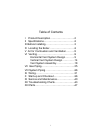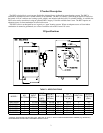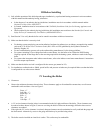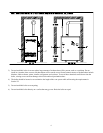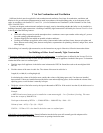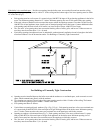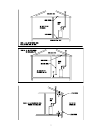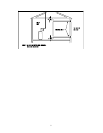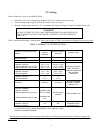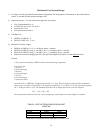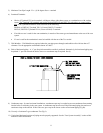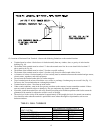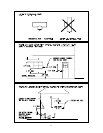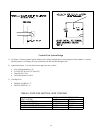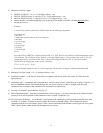
5
V Air for Combustion and Ventilation
Sufficient fresh air must be supplied for both combustion and ventilation. Provisions for combustion, ventilation, and
dilution air for gas utilization equipment must be made in accordance with local building codes, or in the absence of such
codes, in accordance with Sections 5.3.3 and 5.3.4 (“Air for Combustion and Ventilation”) of the National Fuel Gas Code,
NFPA 54/ANSI Z223.1.
To ensure an adequate combustion and ventilation air supply, start by determining whether the boiler is to be installed in a
building of unusually tight construction. A building of unusually tight construction is defined by the National Fuel Gas Code
as having all
of the following features:
• Walls and ceilings exposed to outside atmosphere have a continuous water vapor retarder with a rating of 1 perm or
less with openings gasketed and sealed.
• Weather stripping has been added on openable windows and doors.
• Caulking and sealants are applied to areas such as joints around window and door frames, between sole plates and
floors, between wall-ceiling joints, between wall panels, at penetrations for plumbing, electrical, and gas lines, and at
other openings.
If the building is of unusually tight construction, see the instructions on page 6. Otherwise, follow the instructions below.
For Buildings of Other than Unusually Tight Construction
1) Determine whether the boiler is to be installed in a confined space - A confined space is defined by the National Fuel Gas
Code as having a volume less than 50 cubic feet per 1000 BTU/hr input of all appliances installed in that space. To determine
whether the boiler room is a confined space:
a. Total the input of all appliances in the boiler room in thousands of BTU/hr. Round the result to the next highest 1000
BTU/hr.
b. Find the volume of the room in cubic feet. The volume of the room in cubic feet is:
Length (ft) x width (ft) x ceiling height (ft)
In calculating the volume of the boiler room, consider the volume of adjoining spaces only if no doors are installed
between them. If doors are installed between the boiler room and an adjoining space, do not consider the volume of the
adjoining space, even if the door is normally left open.
c. Divide the volume of the boiler room by the input in thousands of BTU/hr. If the result is less than 50, the boiler room is a
confined space
.
Example:
A BWF229 and a water heater are to be installed in a room measuring 6ft – 3 in x 7ft with an 8 ft ceiling. The water
heater has an input of 30000 BTU/hr:
Total input in thousands of BTU/hr = (229000 BTU/hr + 30000 BTU/hr) / 1000 = 259
Volume of room = 6.25 ft x 7 ft x 8 ft = 350 ft3
350/259 = 1.35 Since 1.35 is less than 50, the boiler room is a confined space.
If the boiler is in an unconfined space
– Natural infiltration into the boiler room will normally provide adequate air for
combustion and ventilation without additional louvers or openings into boiler room.




